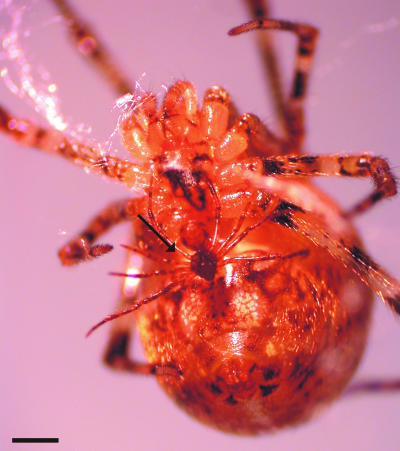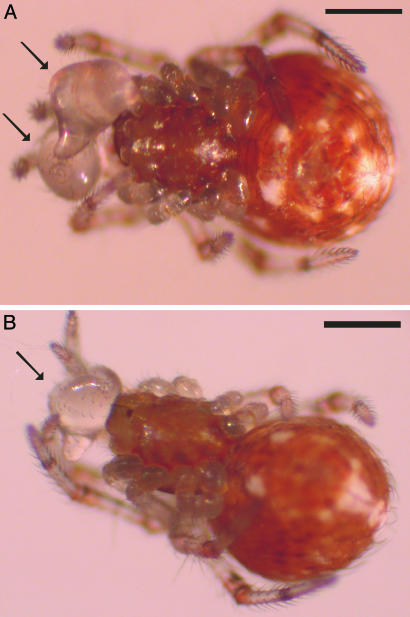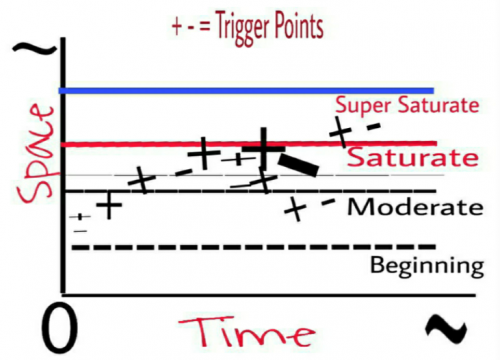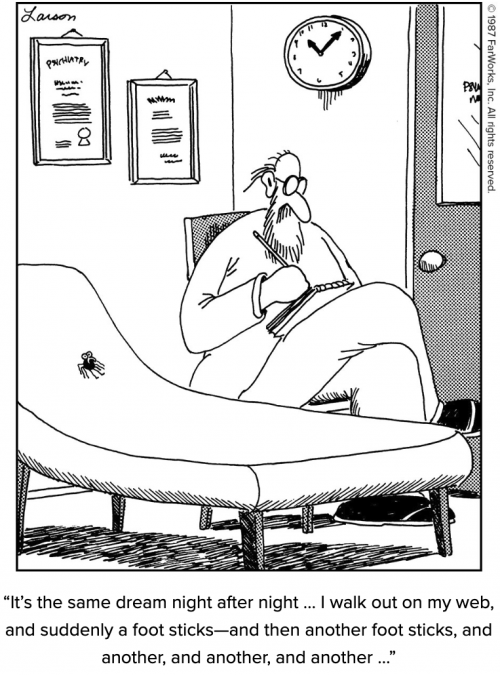Some spiders have a serious problem: runaway evolution sometimes produces maladaptive conditions. Here’s a spider, Tidarren sisyphoides, that exhibits extreme sexual dimorphism — males have about 1% of the mass of the females.

Male and female T. sisyphoides in copula. The minute male (indicated by the arrow) on the female’s ventrum is ≈1% of the female’s mass. (The scale bar represents 1 mm.)
That’s not the problem, though. The problem is that the males maintain a massive pair of palps. Really gigantic. They probably clang when they walk. Look at these two big boys, and the monster intromittent organs dangling from the front of their faces.
You may notice that the top spider has the normal two palps, which are so large that they’re interfering with each other. The bottom spider has only one palp. The surprise is that this is a product of self-mutilation.
During copulation, males generally use both pedipalps in an alternating fashion to inseminate the paired spermathecae in the female. In Tidarren, however, one pedipalp is removed (either left or right pedipalp, seemingly at random) before sexual maturation which has also been described for another spider of similar size and closely related to Tidarren (Echinotheridion). Just after molting to the penultimate instar, the male secures one of its pedipalps to a silk scaffold and then twists it off by turning in circles and pushing the bulb with the third and fourth pairs of legs.
Ouch. There’s a reason for their partial emasculation, though.
We found that, for male Tidarren sisyphoides, maximum speed increased (44%) significantly and endurance increased (63%) significantly after pedipalp removal. Furthermore, spiders with one pedipalp moved approximately 300% greater distances before exhaustion and had a higher survival after exertion than those with two pedipalps. Removal of the pedipalp may have evolved in male Tidarren because of enhanced abilities to search for females (higher endurance and survival after exertion) and to out-compete rival males on the female’s web (higher maximum speed). Our data also highlight how the evolution of conflicts can result in the evolution of a novel behavior.
Not recommended for humans, unless your testicles are the size of basketballs.
Ramos M, Irschick DJ, Christenson TE (2004) Overcoming an evolutionary conflict: removal of a reproductive organ greatly increases locomotor performance. Proc Natl Acad Sci U S A 101(14):4883-7.












